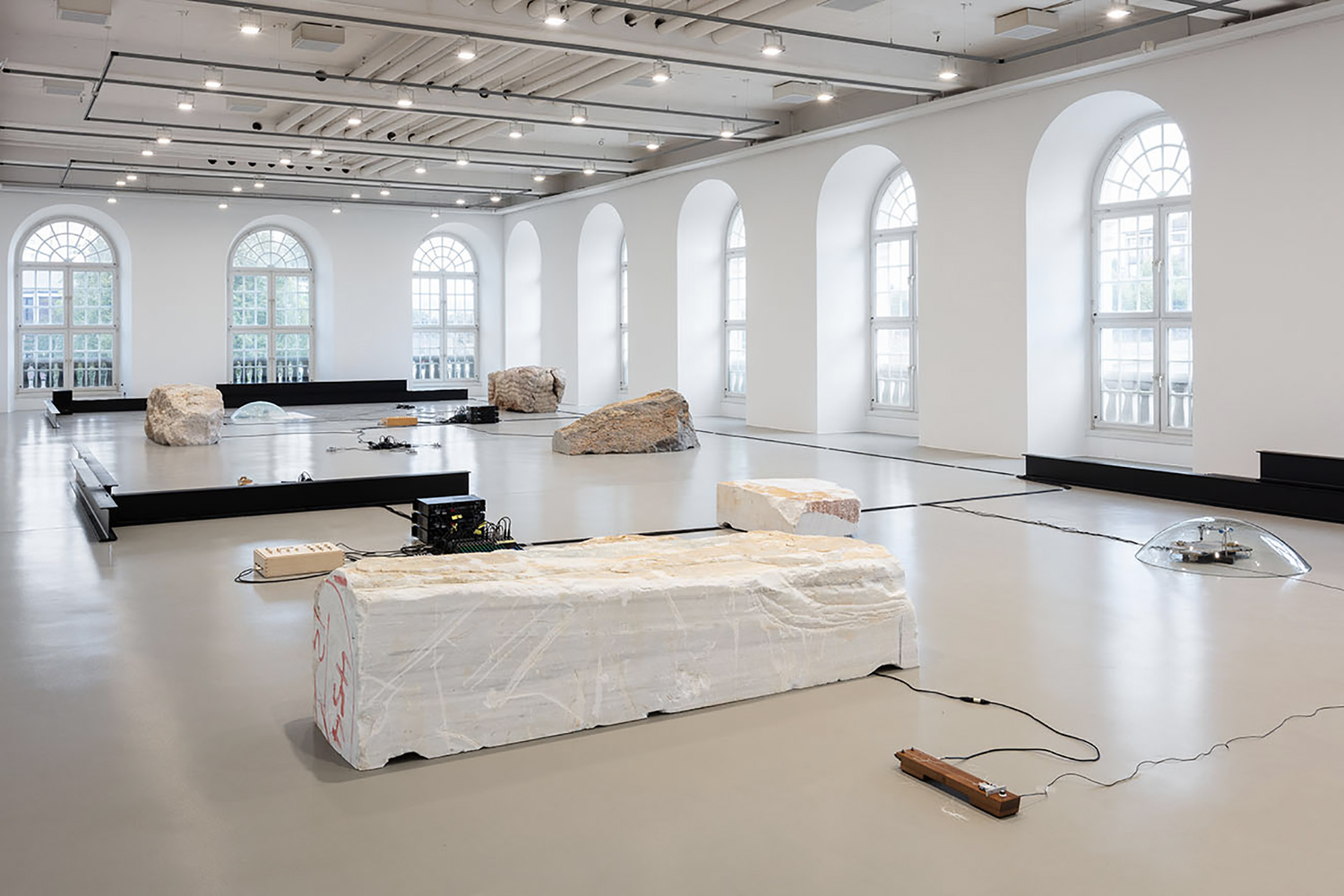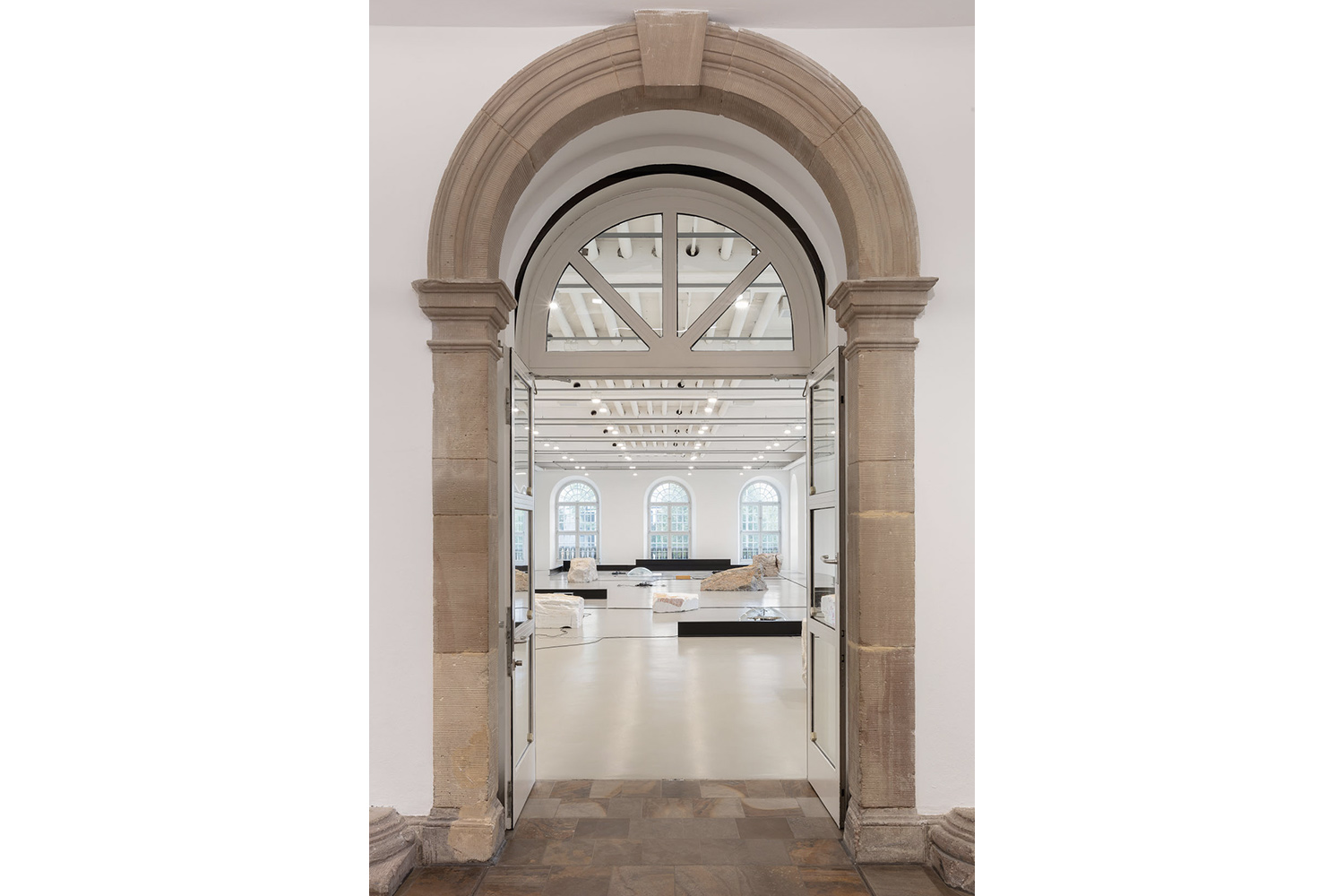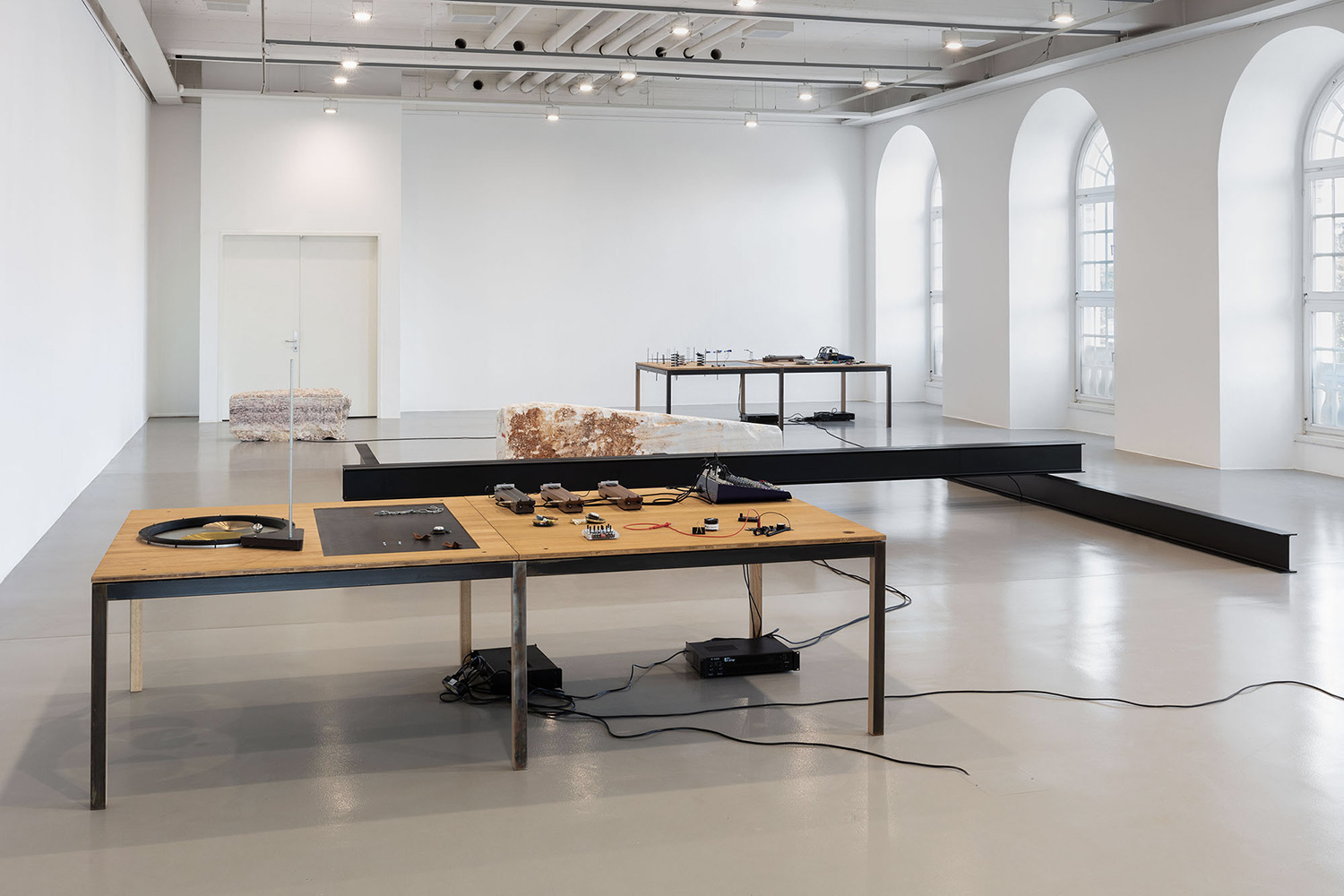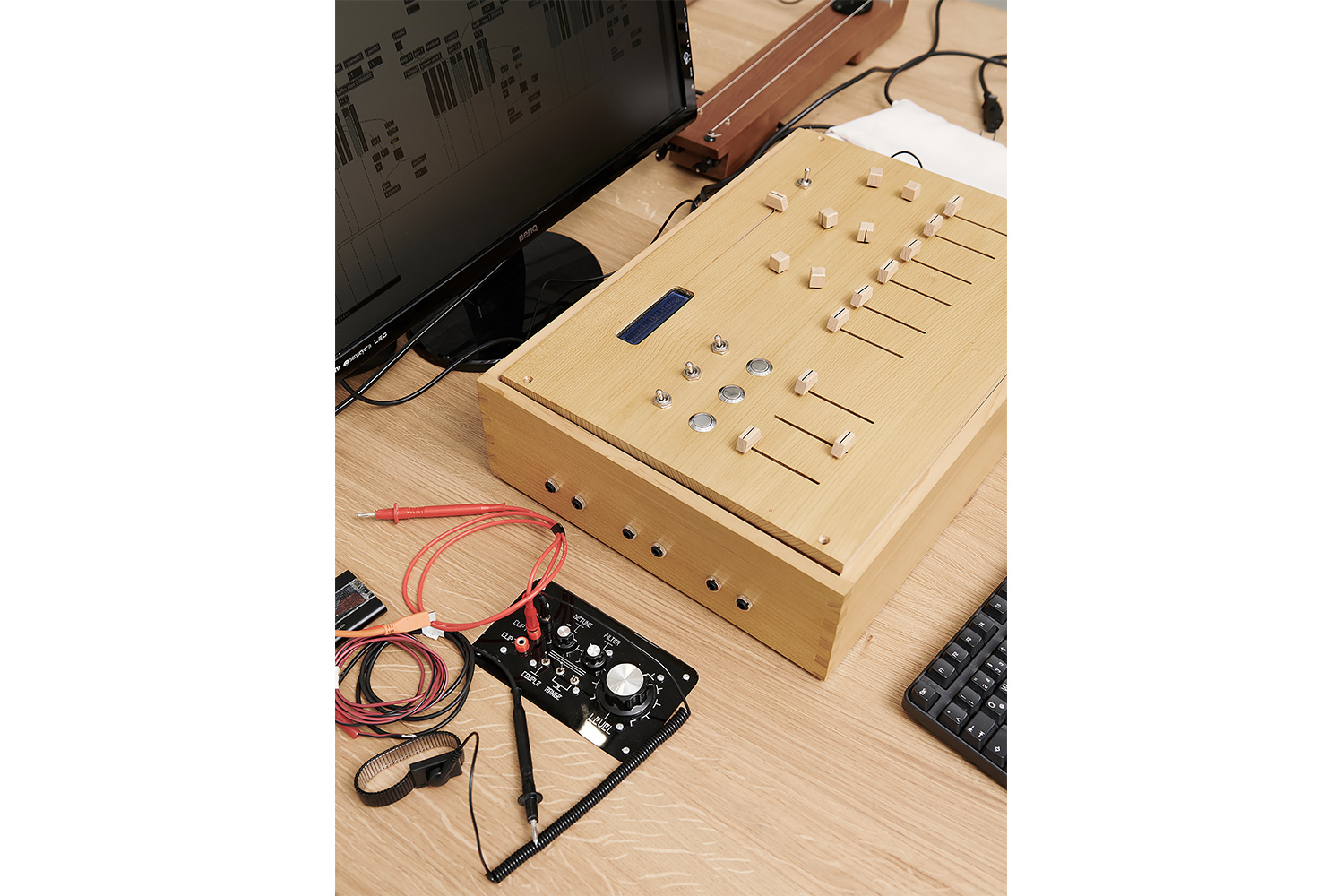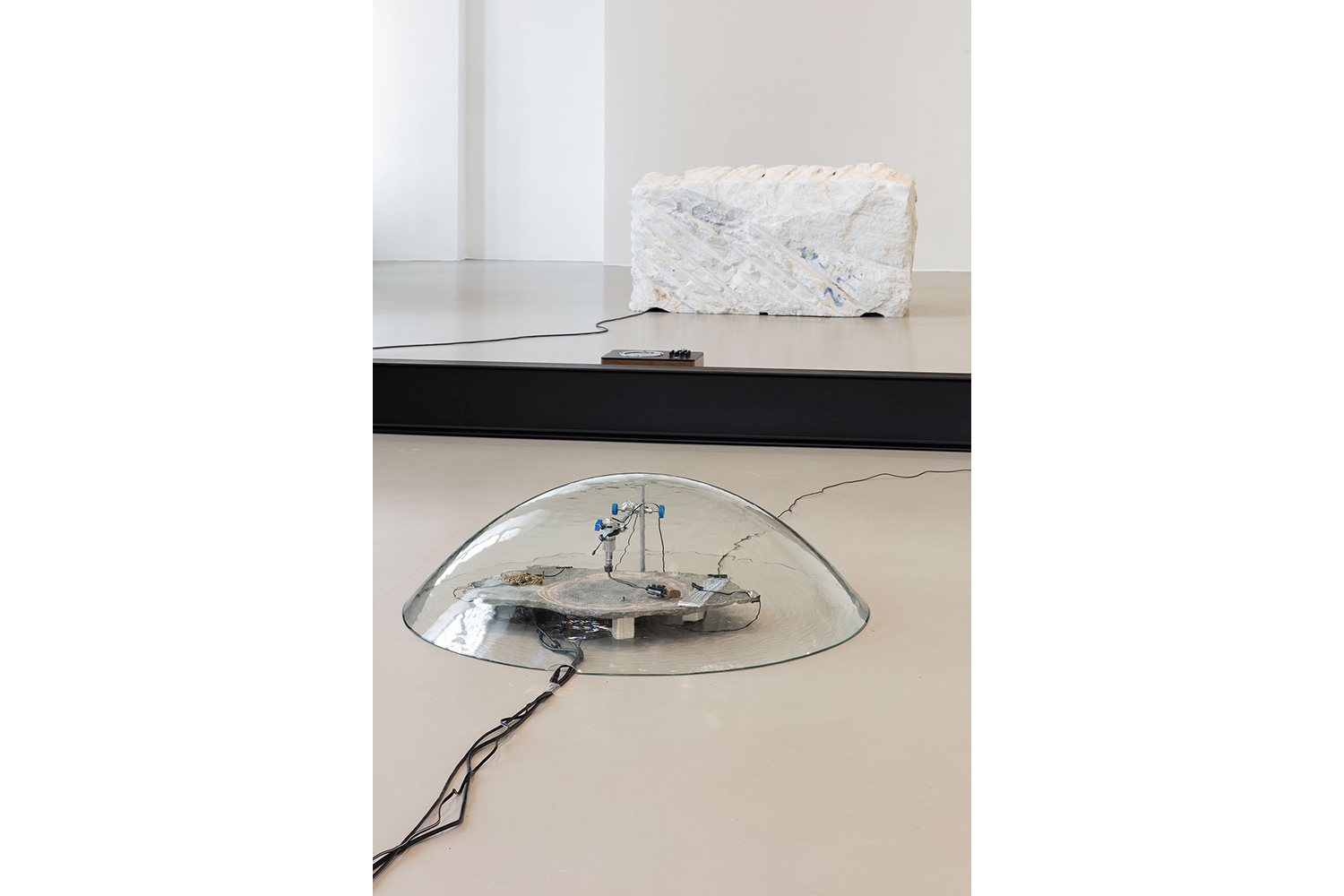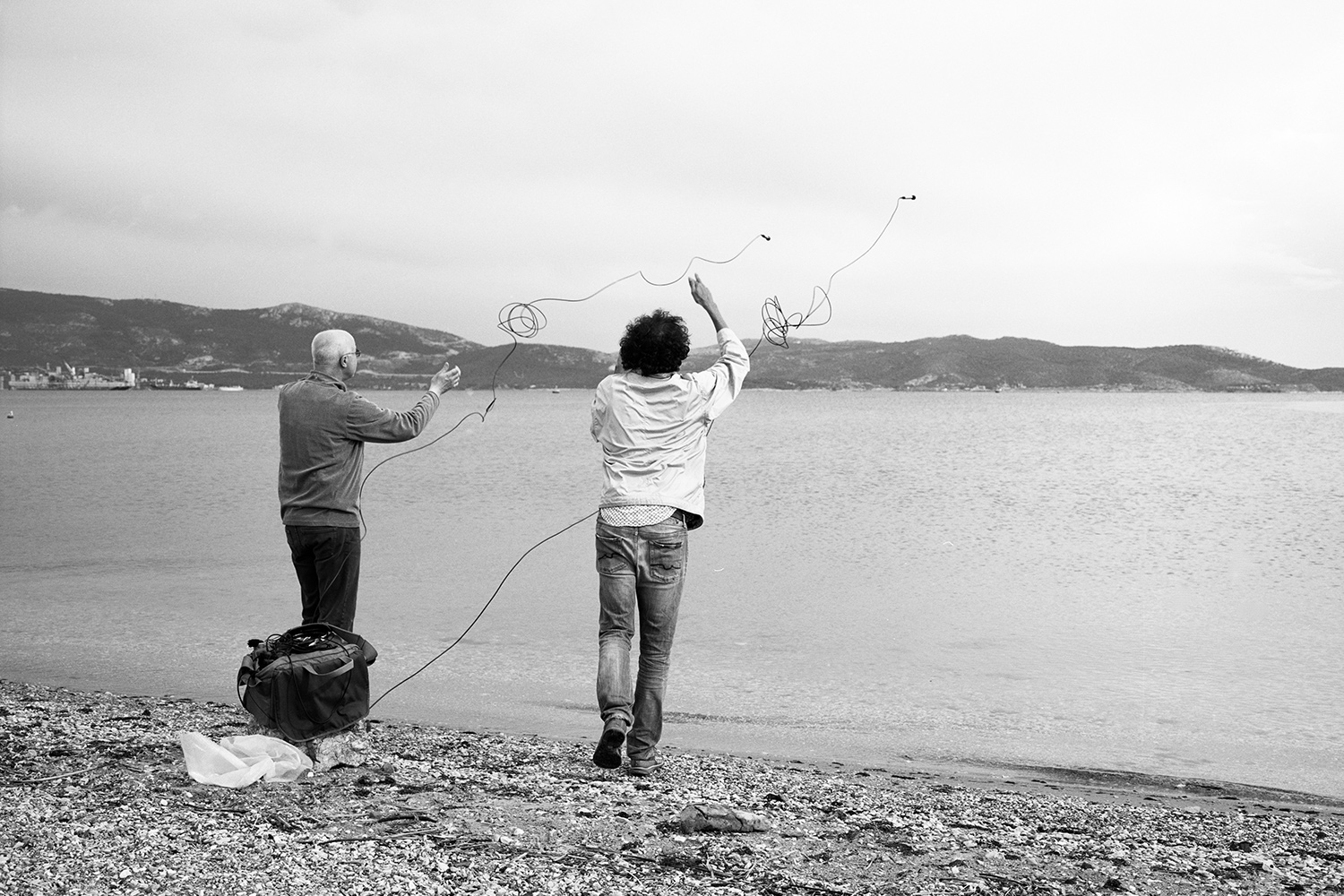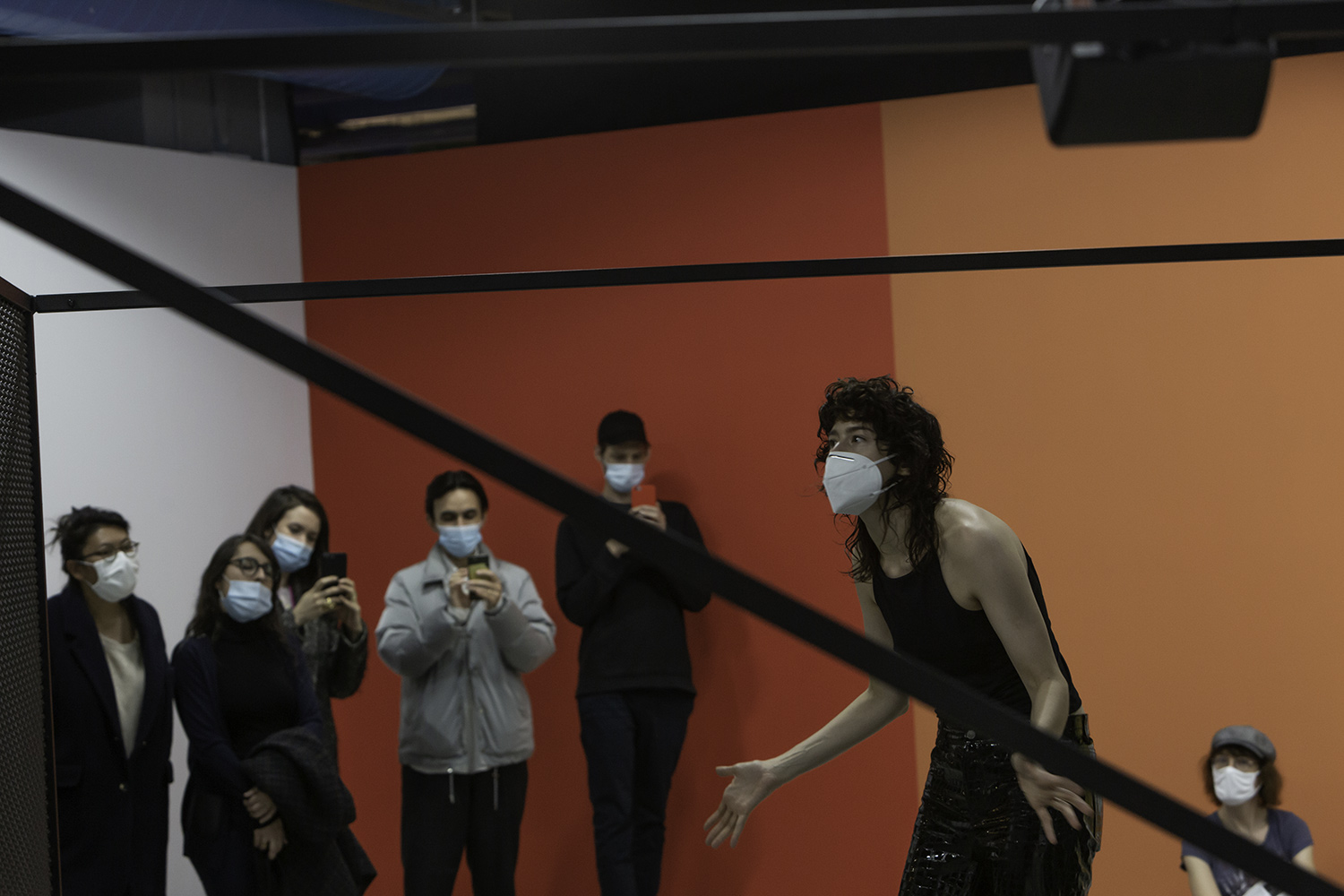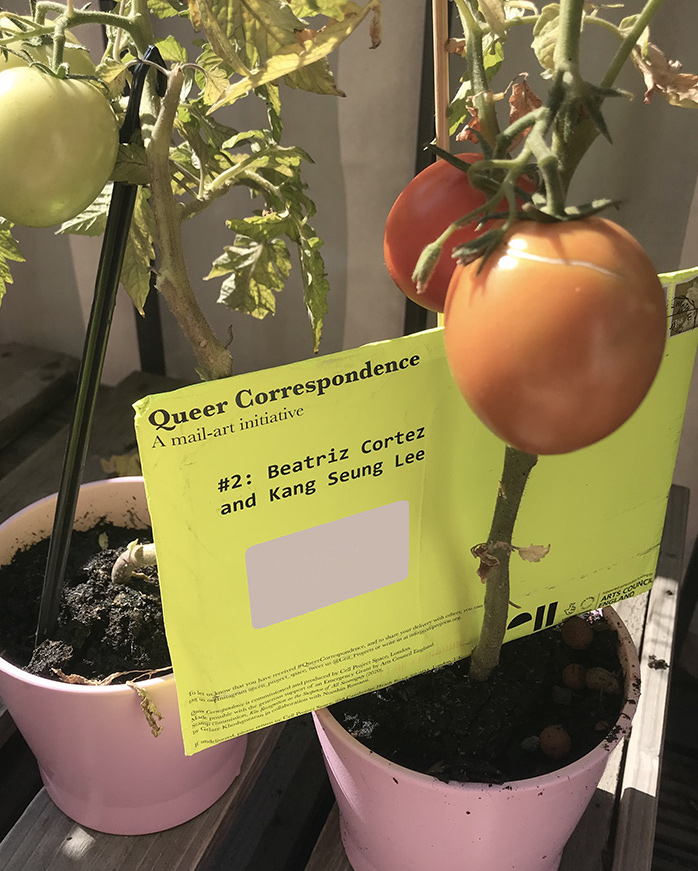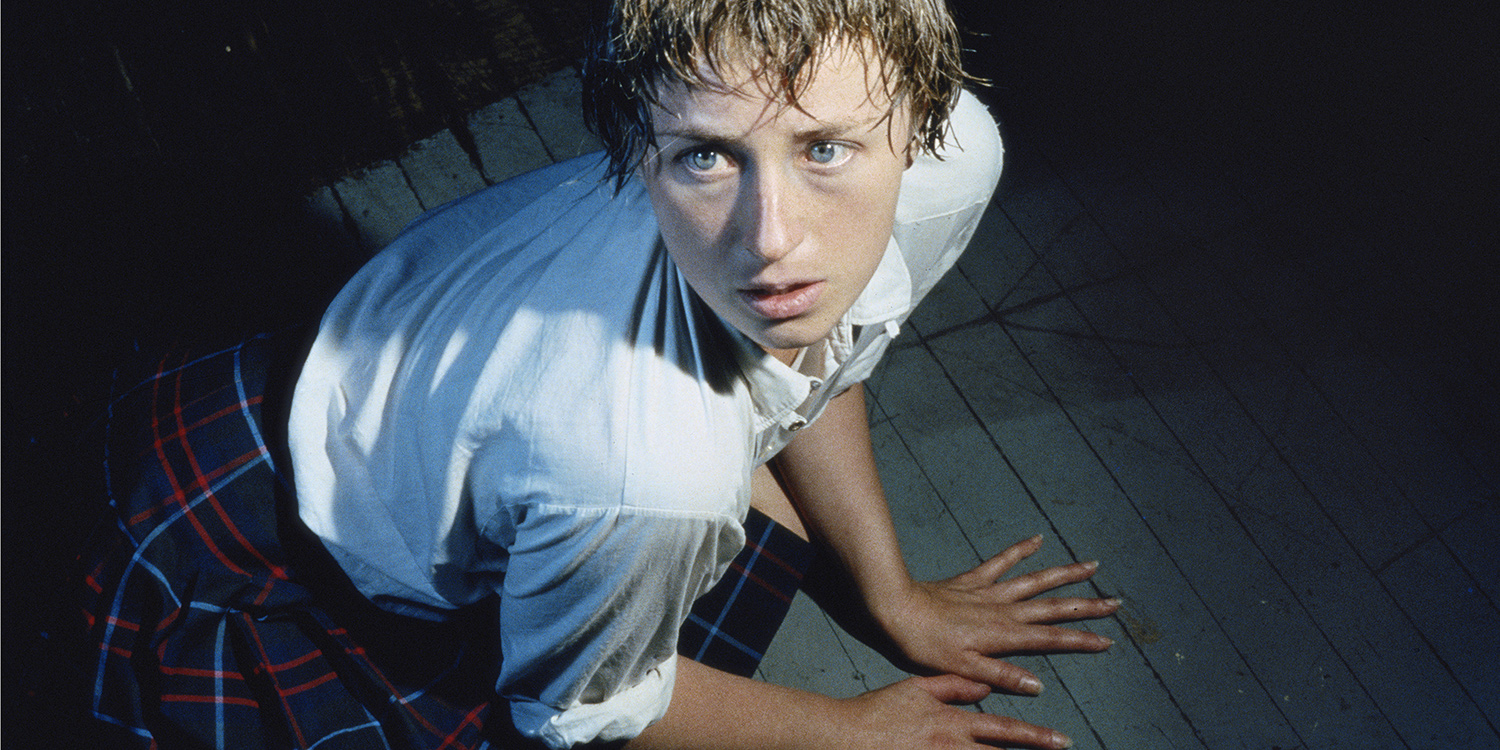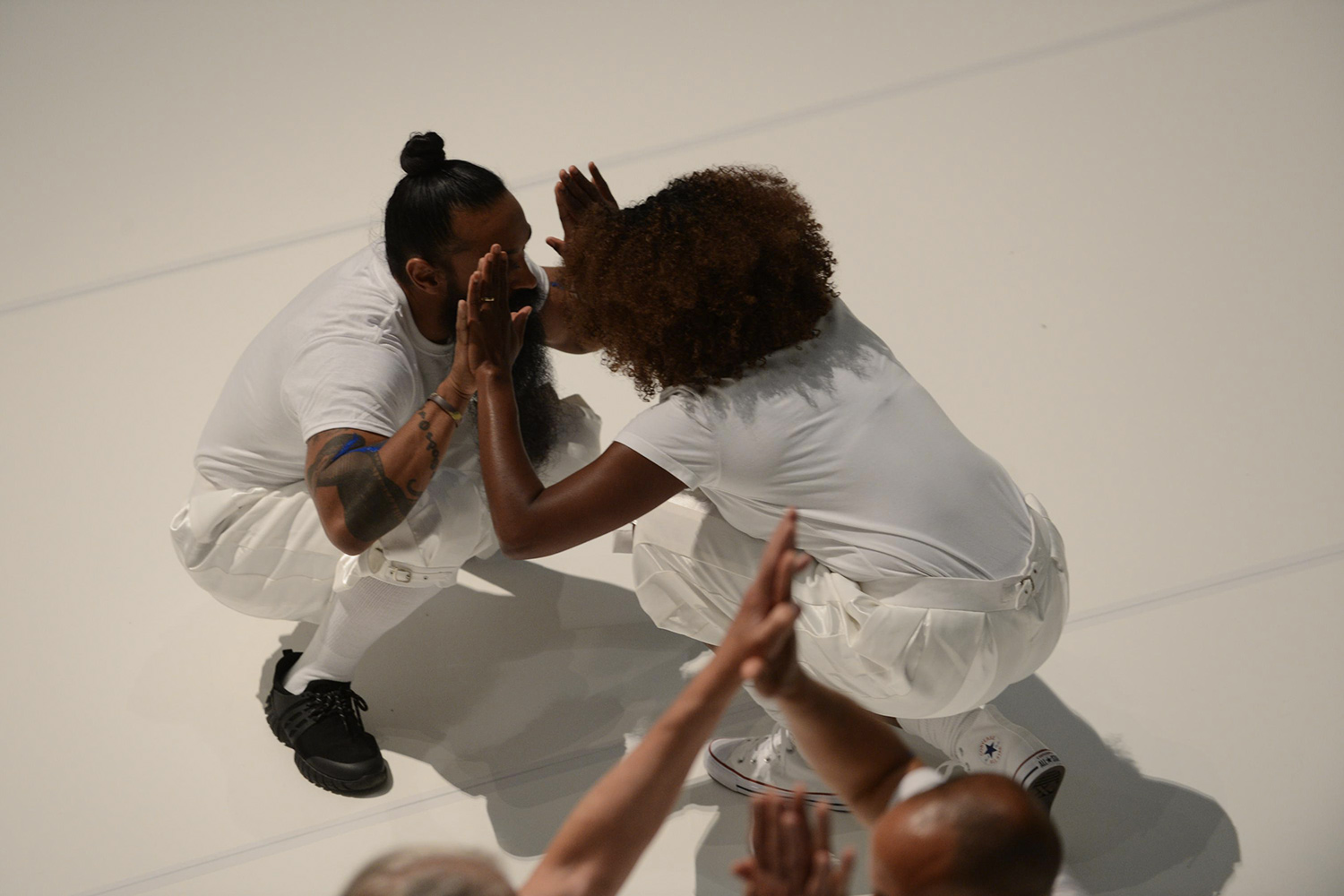A metallic clamor pulses across an arrangement of marble blocks, steel beams, cables, and handmade musical instruments, before a rustling wind echoes throughout. In “Waters’ Witness,” Tarek Atoui brings together recordings from city ports into a genre-defying installation of sound, the artist’s main medium. Atoui’s exhibition emerges from his project I/E (2015–ongoing), a series of sound works and musical instruments that feature sounds recorded in ports around the world, from Porto and Athens to Beirut, Abu Dhabi, and Singapore. At the Fridericianum, his first solo exhibition in Germany, Atoui has produced a subtle yet affective two-room installation of sculptural objects and sound, mixing and conjoining recordings from the ports of Elefsina near Athens and Abu Dhabi.
In the main room of “Waters’ Witness,” a tangle of cables connecting various elements belies the intricate system that Atoui has meticulously composed. The room is divided into two sound-producing circuits that are anchored by two playback devices, I/E Abu Dhabi (2017) and I/E Elefsis (2015). The two I/E systems are conjoined to a spatialized score of hollowed-out quarried marble blocks, steel I-beams, instruments from Atoui’s former works with novel names like The Duofluctus and The Disharmonica, and sub-circuits made of delicate things like a motorized rotating chain that splashes into water to produce clinks and buzzes on the threshold of audibility. Both playback devices emit sounds of the natural and industrial surroundings of their respective ports, Abu Dhabi and Elefsina, which then travel to and are amplified by the other objects within their circuit. The I/E systems further function as processing units that receive inputs of the echoed noises, modulating and resounding them anew. Atoui’s approach to sound installation at the Fridericianum foregrounds randomness, chance, and improvisation around the limits of perception within a choreographed and calculated system. The soundscape of “Waters’ Witness” morphs over time, continuously transforming throughout the duration of the exhibition.
Ports exemplify the paradoxes of mobility. As an imaginary of the free movement of goods, ports conjure modern industrial glory, post-industrial ruin, and the globalized networks of late capitalism. Today, they are inseparable from the abject underside of this history of extraction as sites haunted by migrant deaths and manmade catastrophes, like the explosion in Beirut. In “Waters’ Witness,” the soundscape bears traces of detectable auditory images — water, wind, metal — yet Atoui abstracts sounds from concrete references to their original sources. He instead employs sound as an embodied and transitory medium of physical contact, allowing for an open-endedness that positions viewers as instruments within ongoing flows of echoes and associations. Atoui utilized contact microphones to record the physical sound waves that travel through and are emitted from materials like stone, steel, and water within port environments. Viewers then further perceive these quasi-animistic sounds by directly touching the vibrating I-beams and marble blocks — the former evoking new construction and the Gulf futurism of Abu Dhabi, the latter the mythic antiquity of Athens. Atoui thus turns viewer’s bodies into multisensory transducers of sound beyond the normative functions of perception. What waters bear witness to becomes actively heard, felt, and imaginatively relayed across liminal zones, continental divides, and distant times.
In the second room Atoui presents The Tables of Contents (2020), tables whose surfaces are covered with springs, coils, cymbals, and other makeshift instruments to be plucked, drummed, and played at will. The tables of instruments highlight the centrality of participation and experimentation across different levels of expertise in Atoui’s practice. Throughout the exhibition they will be activated in performances and educational workshops. The echoes of the main room resound into this second room, while the noise of experimentation on The Tables of Contents cycles back into and alters the exhibition’s fluid soundscape. In “Waters’ Witness,” Atoui draws us into an acoustic ecology, to receive and perpetuate residual sounds across the audible borders of a world in flux.

